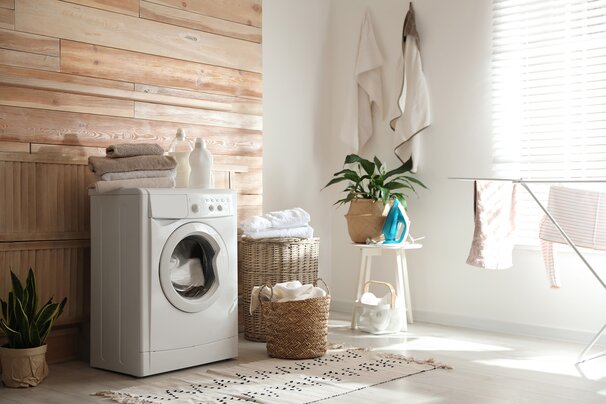
Choosing the right clothes dryer
Switching to a ventless heat pump clothes dryer: An electrification guide
Traditional dryers vs. electric dryers
Traditional dryers, many of which run on natural gas, are still common in homes but come with several drawbacks. Traditional gas dryers have been a staple in many households, but they pose health, environmental, and financial concerns. Gas dryers emit carbon dioxide, contributing to poor indoor air quality and environmental pollution, and can be more expensive to operate over time due to fluctuating gas prices. Electric dryers, on the other hand, offer a more sustainable alternative. There are two types of electric dryers:
Traditional electric dryers
While more environmentally friendly than gas dryers, traditional electric dryers often vent water, lint, and excess heat outside. This process uses a lot of power, resulting in higher electricity bills.
Heat pump dryers
Heat pump dryers stand out for their efficiency and performance. Instead of using a heating element to create hot air, heat pump dryers use a refrigerant system to extract heat from the air around the appliance, making them much more energy-efficient. This closed-loop system allows the dryer to recycle the heat instead of venting it outside, greatly reducing energy consumption.
Benefits of heat pump dryers
Energy efficiency
Heat pump dryers can be up to 50% more energy-efficient than conventional dryers, which means lower utility bills.
Ventless design
Unlike traditional dryers, heat pump dryers do not require an external vent. This convenient design means they can be installed in a variety of locations, including apartments and spaces without existing dryer vents.
Gentle on clothes
Heat pump dryers operate at lower temperatures, which reduces wear and tear on fabrics, preventing shrinkage and prolonging the life of your clothes.
Improved indoor air quality
Ventless operation prevents the loss of conditioned air and avoids bringing outdoor air into your home.
Moisture removal
By condensing moisture within the dryer, heat pump dryers don’t add humidity to your home, which is especially beneficial in already humid environments.
What to consider when choosing a dryer
Before purchasing a new dryer, consider the following factors:
Space requirements: Ensure you have enough space for the dryer. If it's a ventless heat pump model, there’s more flexibility when placing it in your home without the need to cut into the wall of the building for a vent pipe.
Noise levels: Heat pump dryers are generally quieter than conventional gas or electric dryers because they operate at lower temperatures and with less mechanical noise. Check the product specifications for the decibel (dB) rating. As a rough guide in real world terms, 60 dB is the noise level of a normal conversation, and 70 dB is comparable to a vacuum cleaner.
Energy consumption: When comparing different dryer models, look for the following:
- The Energy Star label indicates that the dryer meets strict energy efficiency guidelines set by the U.S. Environmental Protection Agency.
- The Energy Guide label, a yellow and black label, provides an estimate of the dryer’s annual energy consumption and operating costs.
- The estimated kilowatt-hours (kWh) per cycle, or per year. A lower number indicates less energy usage.
- The energy factor (EF), sometimes called the combined energy factor, measures the efficiency of the dryer. The higher the EF, the more efficient the dryer. Heat pump dryers typically have a much higher EF than other models.
Initial cost vs. long-term savings: Although heat pump dryers may have a higher upfront cost, the energy savings over time can offset this initial investment, making them very cost-effective in the long run. The yellow Energy Guide label is a good way to compare annual energy costs for different models.
Electrical requirements: Before purchasing a heat pump dryer, ensure your home’s electrical system can support it. Some dryers require a 240-volt outlet and a dedicated circuit, typically around 30 amps. Check if you have a 240V outlet in your laundry area; it is distinct from other outlets and has three or four prongs. If you need a new circuit, consult a licensed electrician for safe installation. This electrical panel guide has tips on how to check if your breaker box has enough space for your new dryer.
How to make the switch
Switching to an electric dryer is straightforward. Here are the steps to take:
1. Research products
Look for reviews and ratings to find the best heat pump dryer for your needs. You can see a list of electric dryer models in our Product Finder.
2. Check incentives
Take advantage of available rebates and incentives. Our Incentives Center has guidance on attractive rebates for energy-efficient dryers.
3. Purchase and install
Many retailers offer installation services when you buy a dryer. If you need professional installation assistance, you can always find a trusted pro in our Contractor Finder.